Land and Development
LAND USE AND DEVELOPMENT
In rural areas, such as the Windham Region, it's easy to see how the horse and buggy helped to shape our villages, the railroads and river influenced the development of our regional centers, and the automobile is affecting our rural lands. The function of these distinct land use categories — regional centers, villages, resort centers and rural lands — offer their own set of transportation needs and constraints. This is an important relationship, and the transportation system's function in support of a way is presented according to these land use categories.
SETTLEMENT PATTERNS
Physical limitations have played a dominant role in the Region's pattern of settlement. European settlement first occurred in the Connecticut River Valley where water, good soil and access to natural transportation routes were available. Villages evolved at the confluence of streams, as exemplified by Brattleboro and Bellows Falls in the Connecticut River Valley, and Wilmington and Jamaica in the Region's interior.
Historically, both Brattleboro and Bellows Falls were centers of commerce due to their location on the Connecticut River. From the outset, the river provided hydropower for manufacturing and a transportation corridor for logging and for shipping by flatboat. In the nineteenth century, the river's commercial importance declined due to increased shipping by rail. Beginning in the 1950's, the building of the interstate highway system resulted in a further shift to trucking as the major means of freight movement in the region. This also was a transition from private rail systems to publicly funded highways, which had major unforeseen policy implications.
This linear pattern of development was the natural response to the river and stream valleys, and it was followed by the establishment of a regional road system that linked village nodes in each major valley. In the latter half of the twentieth century, with private automobiles and trucks dominating transportation, these roads enabled a land use pattern of mixed residential and commercial uses to radiate out from villages. The resulting pattern of the Region is one of small villages located in stream valleys with expansion along connecting roads (map xx) Some areas the sprawl has become pervasive and the rural open landscape has been compromised.
Public investment in lands, facilities, services and utilities is an important factor in shaping patterns of development and land use. In most cases, public investments are at least as influential as private development in determining the growth of the Region's communities. The most significant public investments have been the construction of Interstate 91 and other highway improvements, flood control dams, waste water treatment and water supply facilities, and acquisition of Green Mountain National Forest lands. State highway improvements and electric generation stations and distribution lines also represent substantial infrastructure investments that have not only responded to but also continue to influence growth.
Since the 1950's, the ski industry has been an important contributor to the Region's settlement pattern. Alpine ski facilities and accommodations have brought steadily increasing numbers of skiers to the Region. The 1980's saw new expansion at the resorts where facilities and services for four‑season recreation are now provided. Tourist‑related industries and vacation home construction have accompanied this land use trend and in many respects are more significant growth factors than the ski facilities themselves, and are major travel generators.
The Region's proximity to the metropolitan Northeast and ease of access via Interstate 91 and the railroads are important factors that have influenced settlement patterns at different times. The rural environment of the Connecticut River Valley and the Green Mountains is a strong magnet for visitors and new residents to the Region. Other regional, State and Federal economic opportunities and programs‑‑employment, community services, tax policies‑‑have far‑reaching and, in some cases, unknown implications for the Region's future growth and land settlement.
Tourism and related development are an important part of the land use – transportation connection, and perhaps the most visible one in this region. Other considerations also come into play: the relationships of where we live to where we work, the ability to develop businesses in rural Vermont that deliver perishable products to distant markets, and the ability for some to work at home by computer. Telecommunication has the potential to virtually eliminate travel and distance as factors for some workers in choosing where to live, and it could also reduce the role of traditional economic factors in controlling rural sprawl.
TRANSPORTATION AND REGIONAL LAND USE
The current land use pattern is characterized by extensive forested areas, agricultural lands (primarily in the Connecticut River Valley), small villages, two urban centers, a regional highway and rail network, and ski resort and second home developments on the eastern slopes of the Green Mountains.
Transportation systems and land use patterns affect each other so dramatically, that it is hard to say one affecting another greater or less. As stated in previous sections, rural sprawl affects the transportation system by nearly forcing people to drive to fulfill any services. In southern Vermont, this is felt in the tourist‑related traffic that was made possible by the decision in the mid‑fifties to build the interstate highway system. That transportation system placed this region within an easy day's drive of millions of Americans and brought to the region significant economic growth, substantial changes in land use, and a lot of traffic. Transportation and land use are linked in a cycle or loop in which (figure 4-1):
As we experience traffic congestion and travel delays, our awareness of the connection between land use and transportation has increased. The above cycle starts at the land use point, as a particular land use develops the need for trips or traffic in and out increases. Consequently, there is a need for transportation facilities to serve that traffic (i.e. road maintenance) and the presence of this facility provides accessibility, or the opportunity to move freely to and from a particular land use. This accessibility is one that gives the land value, which consequently may increase subsequent opportunities (i.e. more development).
The following regional land use categories recognize existing settlement patterns, availability of existing and planned public infrastructure (water, sewer and roads) and land use policies established in existing Town Plans. A basic goal of the Windham Regional Plan is maintaining a settlement pattern of compact regional centers, villages and resort centers, separated by rural countryside. Concentrating development in order to maintain the Region's characteristic pattern of settlement is regarded as a top concern of citizens.
The Windham Regional Plan land use categories are (map xx):
n Regional Centers
n Villages
n Resort Centers
n Rural Lands
REGIONAL CENTERS
The two regional centers in the Region are Brattleboro and Bellows Falls. These centers are locations of concentrated commercial and industrial activity, accompanied by relatively high population densities of residents and workers. A full range of services supports the regional centers, including municipal waste water treatment facilities, public water systems, communication centers, and other utilities. The regional centers also are locations for the Region's government, cultural, and service institutions.
The regional centers give the Region opportunities to attract and sustain certain types of economic development. They also provide denser settlement and provide residents and businesses with numerous services that are less available in more rural areas. In these centers the transportation issues are more complex due to combined commuter, commercial, residential and tourist traffic and associated congestion, as well as shipping that is related to commercial and industrial activity.
Both regional centers are located on two major highway corridors, Interstate 91 and U.S. 5. They are also each on the Central New England Railroad (formerly Central Vermont). Though currently used only for recreational travel, the Connecticut River is another historically important transportation corridor both regional centers are located on. In addition to these north-south corridors, each of the regional centers has significant corridors that traverse it east to west. VT 9, an east – west principal arterial, passes through Brattleboro and is currently nominated to be part of the National Highway System (NHS) (for further discussion on NHS see page 2-6). This road runs the width of the state from New Hampshire to New York. In Bellows Falls, VT 103 also is currently nominated to be part of the NHS and connects to Rutland and points west and north. This combination of corridors makes the regional centers nodes for commercial and passenger transportation within Vermont as well as between Vermont and the greater Northeast.
Brattleboro and Bellows Falls each has a Designated Downtown, under the Vermont Agency of Commerce and Community Development’s Vermont Downtown Program, two of eighteen designated downtowns in the state. Participation in this program requires documentation of a viable downtown center, a commitment to enhancing and maintaining the downtown district, and sound financial and administrative plans. Designated downtowns are eligible for priority funding in a number of state programs, and projects can be eligible for downtown transportation and capital improvement funds, reallocation of sales tax receipts for building materials related to expansion or rehabilitation of downtown properties, an income tax credit for rehabilitation of certified historic buildings, and other benefits.
Brattleboro and Bellows Falls also provide important intermodal connections. The Transportation Center in Brattleboro provides parking, as well as public transit and taxi services to many of the towns in the region. CRT, DVTA, and the Brattleboro BeeLine all serve the intermodal center daily; including DVTA coordinating with Amtrak’s evening schedule to provide intermodal service from Washington DC and New York City to the Wilmington/Dover area. The Bellows Falls Intermodal Transportation Center, currently in the design phase, will establish a regional transportation hub at the existing Bellows Falls Railroad Station, in the Town of Rockingham. The transportation hub will provide access to and connections between the train, regional bus, taxi, bicycle rentals and a park & ride lot.
Desired Transportation Functions of Regional Centers
The regional centers should continue to serve as centers of employment and for the distribution of goods in the Region. This means maintaining a reliable and safe transportation infrastructure that provides the needed connections, is attractive for economic development, is convenient for commuters, and can handle the burdens created by dense development. However, it is important that this occur without unduly impacting the quality of life that made the area an attractive place for people to live and for development to occur in the first place.
Truck traffic and general congestion are increasing in the regional centers. It is important that future road standards and reconstruction projects accommodate increasing needs while providing desired safety levels and retaining the integrity of existing communities
To relieve traffic congestion and give commuters, residents, and visitor’s convenient access to the regional centers, alternative means of travel should be incorporated into the transportation system. This should include paved bicycle shoulders on certain roadways, separated bike/pedestrian paths where appropriate, busses and paratransit systems, rail and intercity bus service. Park & ride lots should be conveniently located to allow drivers to park their cars and car pool, walk, bike, or take the bus or rail.
The regional centers are the ideal places in the Windham Region to develop strong intermodal transportation systems (figure 4-3). In an otherwise largely rural region, these are areas of relatively dense population and development, and can generate sufficient demand to allow for public transit systems, carpooling and paratransit. Both regional centers also have railroad corridors, which could allow Brattleboro and Bellows Falls to increase their role as multi-modal collection and distribution points for goods and for commuter services.
VILLAGES
Most of the Region's towns have villages that provide for a concentration of residential, commercial service, small industry and government uses. The Windham Regional Plan recognizes twenty-two villages: Algiers, Bondville, Grafton, Jacksonville, Jamaica, Londonderry, Newfane, Putney, Readsboro, Saxtons River, South Londonderry, South Newfane, Townshend, Vernon, Wardsboro, West Dover, West Halifax, Westminster, Weston, Whitingham, Williamsville, and Wilmington.[1] Infrastructure improvements vary from village to village based on the size of the community. Some villages have invested in wastewater treatment facilities, water systems, sidewalks, lighting and recreational lands. It is important to note that the size and density of development exist along a continuum, so that the difference between a hamlet and a village may at times seem insignificant.
Typically, these villages are densely developed with mixed land uses such as residences, schools, commercial developments, municipal services, cultural facilities, and other services. Typical cultural facilities found in the villages include a church or a community center. Services, such as gas stations and/or general stores tend to be small in scale. The village serves as the meeting place for the town, where people come for business, social activities, education, etc.
When these villages were settled the predominant forms of transportation were the horse and walking, and the scale of the village accommodated them. However, as motor vehicles became the predominant form of transportation, villages were changed to accommodate automobiles. As traffic volumes and speeds increased, roads often were widened and village character changed.
In 2002, the Vermont legislature created the Village Center designation. Much like the Designated Downtown, Village Center designation is a tool that can be used to support economic vitality in the village center. Currently, the Region has 13 designated village centers (Putney, Saxtons River, Townshend, West Brattleboro, North Westminster, Westminster Station, Westminster, Westminster West, Whitingham, Wilmington, Algiers, Jamaica and Weston). Communities that receive the designation become eligible for a number of benefits for their village center that include tax credits for building rehabilitation and improvements as well as priority consideration for State programs.
In September 1999, the Windham Regional Commission (WRC) completed the Vermont Route 30 Corridor Management Study. The Corridor Management Study identified many issues in the corridor, but traffic volumes and speed were mentioned as consistent problems in the villages along the corridor. The Study called for a systematic and thematic approach to traffic calming along this road. In 2001, the VT Route 30 Traffic Calming Report was completed. The Report centered on four towns the West River Valley: Newfane, Townshend, Jamaica, and Winhall. With involvement from each town/the public, VTrans, consultants, and WRC, a variety of traffic calming devices were recommended for each village; ranging from a roundabout in Jamaica, to textured pavement in Newfane, to dynamic striping in all four towns. In 2004, three consistent traffic calming themes were agreed to be implemented: speed limits, installation of town welcome signs, and installation of dynamic stripes. Two out of the three have been implemented, speed limits and installing dynamic stripping. The speed limits through this particular stretch of VT 30 are 50 mph in the open rural areas, 40 mph in the transition areas, and 30 mph in each village center. In summer 2005, dynamic stripes were installed at the north and south ends of each of the four villages. Preliminary data in some of the villages show a decrease in speeds in the vicinity of the stripes; although further analysis of the data will continue.
As traffic volumes continue to increase throughout the region, it is anticipated speeding and traffic congestion will continue to be an issue in many of the towns. The VT 30 Traffic Calming Report demonstrates that regional towns, VTrans, and WRC recognize speeding as a transportation problem and are committed to slowing traffic down through various traffic calming measures.
Desired Transportation Functions In Villages
The Windham Region village in the future must be a place to come to, not merely to drive through. This can be assisted by utilizing the highway approaches to the village as gateways, (figure 4-4) which can also serve to alert travelers that they have arrived in a village and therefore to slow down.
The village will serve as a connection point: people to people, people to services and customer to merchandise. This can be accomplished by providing safe and convenient ways for various modes of transportation to link in the village or at its edges. Automobiles and trucks are essential and must be effectively accommodated, but they must not dominate the human and economic functions for which the village exists. Roads entering the village should have adequate shoulders to accommodate bicycles safely. In some cases, a separate path might be appropriate. Pedestrian access often can be enhanced by sidewalks or paths within the village.
Road standards within the village must accommodate traffic safely, but should not encourage undesired traffic volumes or speed through the village. Rather, the road standards should accommodate the human scale of the village and thereby support the village's economic functions. Transportation connects the village to commerce supports the village and its residents, and traffic needs to flow through the village, but transportation must not become the dominant function of villages.
Traffic calming, is one technique that may improve quality of life of the people living in villages by controlling vehicular movement to improve safety along village roads. Traffic calming is intended to provide convenience, safety and enjoyment of travel by all who may use the highway (i.e. cars, bicyclists, and pedestrians). Traffic calming may be used to slow traffic where needed. This is not to suggest that traffic calming creates congestion. In certain cases, such as some roundabouts, traffic calming tools can increase capacity.
Typical benefits of traffic calming include: improved safety for people, an improved physical environment by lowering vehicle generated noise pollution and disruption, and the potential to add a green, inviting streetscape (Wallwork, August 1992). The major advantage of traffic calming devices over more traditional speed reduction measures such as police enforcement is that traffic calming measures are “self-enforcing”. Because traffic calming devices physically force drivers to slow down, they can be much more effective than measures that rely on consistent enforcement. (Institute of Transportation Engineers) Traffic calming may involve strategic physical modification of roads, which must be compatible with existing land uses. Examples include: speed bumps, chicanes, roundabouts at intersections, street closures or restricted access, narrower streets, brick paving instead of asphalt, etc. Additional traffic calming tools include landscaping, signage, pedestrian paths, gateways, etc.
RESORT CENTERS
Large-scale resorts are located in the western tier of the Region in the Green Mountains. The resorts provide recreational facilities and services and contribute to the Region's seasonal housing stock. Route 100, the state's interior recreational travel corridor, together with Routes 9, 11, 30 and 103, provides access to the resorts.
Resort development is generally concentrated around the ski area base facilities, and these built‑up areas are recognized as resort centers. The Regional Plan recognizes four resort centers: Mount Snow, Haystack, Stratton Mountain, and Magic Mountain. In addition, to the Resort Centers in the Windham Region, many tourists travel through the Windham Region to reach destinations outside the Region such as Bromley, Manchester, Okemo, Killington etc.
Growth in the vicinity of these resort centers, which has been stimulated by resort development and expansion, is sometimes referred to as secondary development. Seasonal homes are perhaps the most discussed form of secondary development, but lodging and restaurants are also prevalent near the Region's resort centers. Much of this secondary development has occurred in places having sewer systems, along major routes, and in and around historic village areas.
Great improvement in the ease and reliability of individual travel, including the construction of the interstate highway system, have given skiers and tourists from metropolitan centers in the northeastern United States easy access to hills and mountains of the Windham Region, resulting in the growth of resort centers. The resorts are accessed by Vermont's central recreational corridor VT 100, VT 9, VT 11, VT 30, and VT 103. With the increase in ease in accessibility to these resort centers, also comes an increase in traffic volume in these recreational corridors.
Desired Transportation Functions of Resort Centers
Resort centers bring valued tourism and economic growth to the Windham Region. But along with those benefits, the negative impacts of high levels of traffic that are common to resort centers raise many issues. Concerns are expressed about the cost of adequate road and bridge maintenance. Safety issues and functional conflicts often arise near resort centers due to seasonal influxes of residents and tourists. At the same time, the Region has an interest in making the resort centers and their recreational facilities attractive and accessible to as many visitors as can be accommodated. Implicit in all of this is a need for balance.
Resort center development has responded to, and remains driven by, the automobile as the single dominant mode of transportation. But policy makers at all levels must respond to a broad public demand for more diverse transportation alternatives. In the future, resort centers should continue to develop better modal links and connection points to enable effective use of different transportation modes and convenient transportation between them.
A growing trend is for skiers to arrive at the centers in groups instead of individually. This pattern is attributed to a changing population, including changing family patterns and generally more skiers per car, more buses, etc. It is therefore important to consider flexible and far reaching public transit programs in these resort centers. While future transportation behavior and technology are certain to change, such changes are difficult to anticipate and flexibility will be important. DVTA is currently the only transit provider in the region that provides service to a resort center. DVTA offers year around transit services to Mount Snow Resort from many places in the Deerfield Valley, including condo units in Dover and shops in Wilmington, as well as serving the Brattleboro Transportation Center.
To help these transportation functions work more efficiently, the Region will need intermodal facilities and centers serving "four season" tourism. Automobiles and trucks will continue to provide essential access to the resort centers, but we must avoid having their presence snarl the functions of the centers or their access routes. To help relieve peak season and peak hour traffic congestion, shuttle bus services and bicycle and pedestrian paths should be designed for existing transportation routes as well as part of any new proposed roads and reconstruction projects. Facilities that complement these intermodal functions such as bicycle racks, bus stops, comfortable and secure waiting areas, and park & ride lots will also improve traveling convenience in the resort centers. While needed road improvements will continue to be made, alternative modes (like buses instead of cars) and alternative routes (pathways for bicyclists and pedestrians), combined with a reliable and convenient system of "intermodal links," can help accommodate increases in travel without requiring undue expansion of the highway system.
RURAL LANDS
Rural lands comprise most of the Windham Region, which are the balance of lands in the Region where growth is not concentrated. These are characterized by open lands and small hamlets where a mixed pattern of residential, commercial, outdoor recreational and small industrial uses occur.
Approximately two thirds of Windham Region land has the potential for resource-based production including agriculture, commercial forestry and mineral extraction. This working landscape is a valuable, integral part of the Region's economy, environment and culture.
In spite of sometimes difficult access, steep topography, lack of waste water treatment facilities and lack of public water supply systems, many acres of rural lands have attracted residential development. Such development is an appropriate use at low densities in many areas, but it has encouraged rural sprawl and will continue to do so.
Historically, the roads and bridges in the Region's rural lands have served mainly to connect villages and towns for local travel and commerce. More recently, these networks have been improved to accommodate increased commuter traffic and through-traffic related to interstate travel, commerce and tourism.
Desired Transportation Functions of Rural Lands
The transportation system in rural lands must serve a wide variety of users, sometimes with conflicting functions. The transportation corridors of the rural lands in the Windham Region allow users to travel within the Region between towns, villages, resort centers, and regional centers. Many corridors also access the broader New England region. Continuation of these functions at an adequate level may require maintaining the transportation infrastructure more effectively than in the past. However, care must be taken when reconstructing or redesigning roads and bridges to prevent the loss of rural character and the inducement of unnecessarily increased traffic volumes and speed. The basic design characteristics of a roadway can play an important role in travel behavior, with drivers naturally tending to higher speeds if roads are straighter and wider than the intended traffic load requires. To accommodate a narrower road the speed limit might need to be lower. Conversely, if a lower speed limit is acceptable, then a different highway standard may also be possible, avoiding an "overbuilt" facility
Park & ride lots should be placed in convenient locations in rural lands, both to serve local uses and to enable more rides sharing by residents. These locations will be used for people to meet and car pool as well as to park for recreational purposes, such as bicycling, swimming, walking, cross country skiing, etc.
Bicycling continues to increase, both as transportation and as a recreational activity, and it needs to be better accommodated in the future by provision of facilities as feasible and appropriate when resurfacing and reconstructing rural roads. Regional trail networks that combine separated paths, road shoulders, class 4 town roads and legal trails should be developed in a coordinated and forward looking manner.
The transportation system also should take into consideration the problems of the transportation-disadvantaged residents of rural areas, who do not have access to a car or cannot drive. Being away from a concentrated growth area frequently can make it difficult to get to work, medical appointments, shopping, etc. The existing network of human service agencies that serves a great deal of this need, and which is already strained, may not receive adequate government funding to meet future needs.
CONCLUSION
Each of the identified land use categories functions differently and has its own special needs and constraints. In the future, regional centers will provide intermodal passenger services to serve the centers and the surrounding areas. Villages in the future will be a place to come to, not merely to drive through. Functional conflicts in villages between motor vehicles and pedestrians will be reduced. To meet the changing demographics of their visitors in the future, resort centers will need to provide alternative modes of transportation to the resort center and to get around once there. In addition, other transit providers must meet the needs of four season oriented tourism. New and reconstructed roads and bridges in rural lands increasingly will be designed to fit within the rural character of their surroundings.
POLICIES
Avoid extension of roads, energy transmission or distribution facilities, and other services into and through Resource Lands.
Consider the secondary growth that can result from transportation infrastructure improvements and their effects on land use in all transportation system decisions.
Minimize functional conflicts and require that developers be responsible for relieving new traffic problems generated by their developments.
Avoid new areas of strip development and minimize the negative effects of existing strip development through good transportation and land use planning.
Review and evaluate proposed development which generates unsafe traffic conditions, especially along sections of highway with low sufficiency ratings.
۶٫ Preserve village character through appropriate design and scale of commercial, industrial, residential, transportation infrastructure and community structures and uses.
۷٫ Encourage preservation and creation of Rights of Way for future linkages between communities, neighborhoods services and other destinations, including preservation of historic roads, trails, and other rights of way that may not be officially recognized, and designing subdivisions to have present or future direct linkages to adjacent properties without requiring returning to main road.
[۱] Not all of the villages identified in this Plan are separately incorporated. Seven villages are incorporated: Bellows Falls, Jacksonville, Newfane, North Westminster, Saxtons River, Townshend and Westminster. Two of these, Bellows Falls and North Westminster, fall into what this Regional Plan identifies the Bellows Falls regional center.
دیدگاهی بنویسید.
بهتر است دیدگاه شما در ارتباط با همین مطلب باشد.


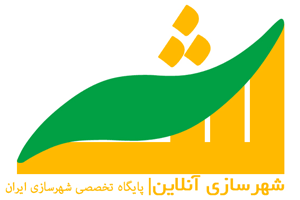 شهروند الکترونیک چه مهارت هایی دارد؟
شهروند الکترونیک چه مهارت هایی دارد؟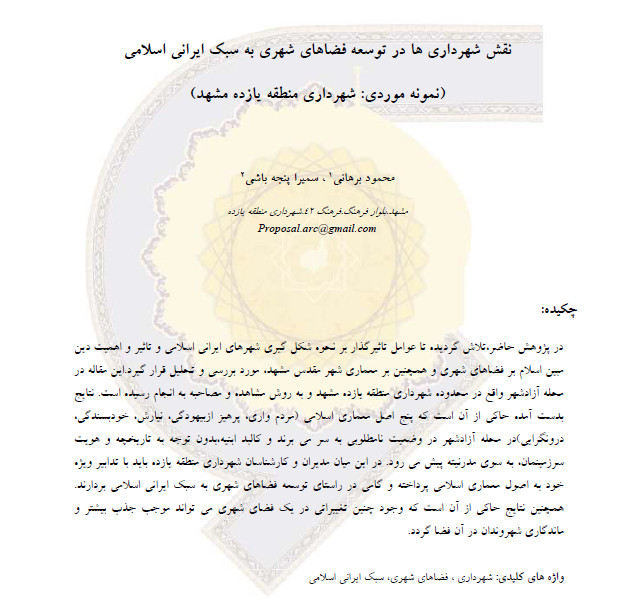 نقش شهرداری ها در توسعه فضاهای شهری به سبک ایرانی اسلامی
نقش شهرداری ها در توسعه فضاهای شهری به سبک ایرانی اسلامی شهرسازی
شهرسازی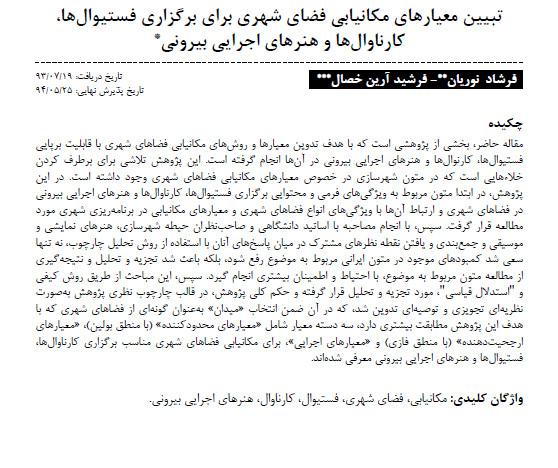 تبیین معیارهای مکانیابی فضای شهری برای برگزاری فستیوال ها
تبیین معیارهای مکانیابی فضای شهری برای برگزاری فستیوال ها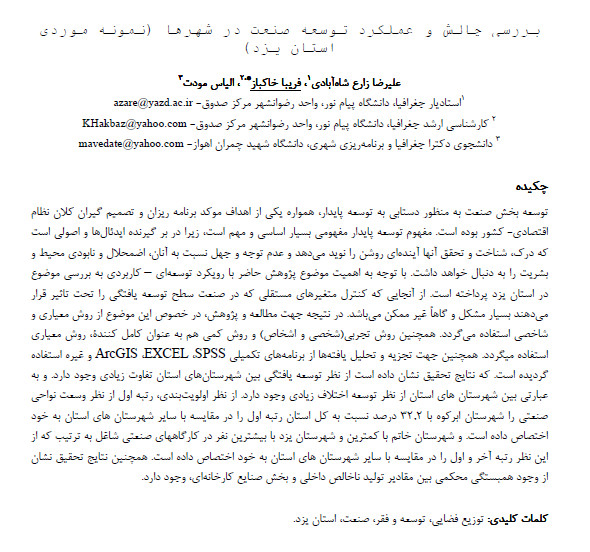 بررسی چالش و عملکرد توسعه صنعت در شهرها (نمونه موردی استان یزد)
بررسی چالش و عملکرد توسعه صنعت در شهرها (نمونه موردی استان یزد)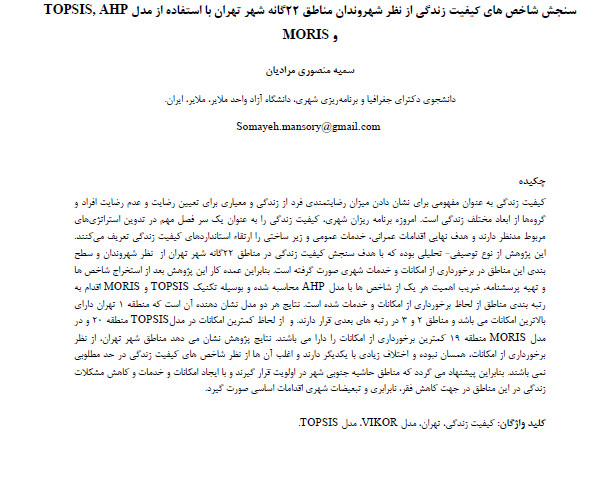 سنجش شاخص های کیفیت زندگی از نظر شهروندان مناطق ۲۲ گانه شهر تهران با استفاده از مدل AHP و TOPSIS و MORIS
سنجش شاخص های کیفیت زندگی از نظر شهروندان مناطق ۲۲ گانه شهر تهران با استفاده از مدل AHP و TOPSIS و MORIS